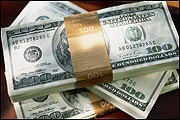For the U.S. dollar, the first administration of George W. Bush was the worst era since the crash of 1987. Since it peaked in October 2000, the value of the dollar has fallen by more than 40% relative to the euro – which means a 55% rise for the European currency. From a height of 1.179 euros to the dollar – or $0.821 to the euro, it has reached its current historic low of 0.7 euros to the dollar. (The euro is now worth $1.30). As the downward spiral of the dollar continues, a chorus of voices warns about the scope of the depreciation, and demands measures to reduce the U.S. current account deficit.

Sign up to stay informed about our latest article releases.